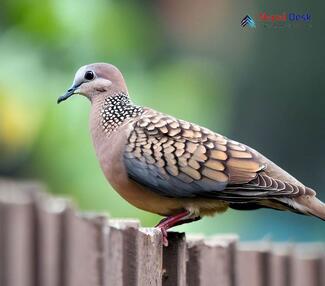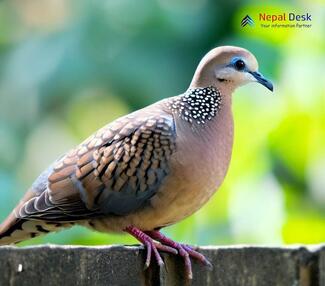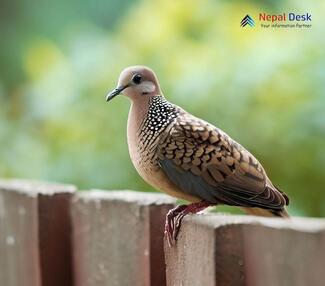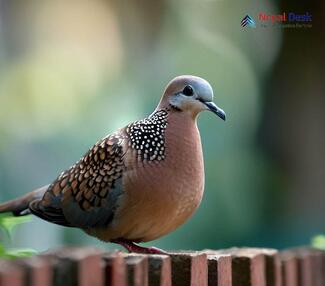The Western Spotted Dove (Spilopelia suratensis) never ceases to amaze bird lovers and ornithologists with its striking appearance and special presence in Nepal. Let's take a closer look at this remarkable bird, delving into its features, habitat, and where it can be found in Nepal.
A Closer Look at the Western Spotted Dove
This small to medium-sized bird measures about 11-12 inches long. Its body displays shades of buff to pale brown, peppered with black spots on the wings and mantle. The underparts are lighter, ranging from cream to pale gray. It sports a long, sleek tail with white tips on the outer feathers. A key characteristic is a black patch on its neck, surrounded by a thin white collar.
Where They Live and Thrive
The Western Spotted Dove calls a wide variety of environments home, including open woodlands, gardens, farmlands, and urban areas. This adaptable bird doesn't shy away from human settlements and is often seen searching for food nearby.
Its existence in Nepal is particularly captivating. Mainly observed in the lowlands of the Terai region as well as lower hills up to 1,200 meters above sea level, this species has been spotted in multiple districts across the country. From eastern to far-western Nepal, sightings include locations like Chitwan National Park, Koshi Tappu Wildlife Reserve, Bardia National Park, and several other smaller districts.
A Species Not Currently at Risk
Listed as "Least Concern" by the International Union for Conservation of Nature (IUCN), the Western Spotted Dove thrives within its distribution range. While it faces threats such as deforestation and urbanization that can lead to habitat loss, this resourceful bird has proven quite adaptable to various environments.
Their Place in Nepal's Biodiversity
Playing a crucial role in Nepal's bird diversity, the Western Spotted Dove enriches the country's ecosystems alongside other native bird species. Its presence serves as a reminder to continue environmental conservation efforts for both prominent and lesser-known species.
To sum it up, the Western Spotted Dove (Spilopelia suratensis) captivates us with its unique features and intriguing existence in Nepal. Learning about its traits, habitat, and conservation status helps us better appreciate the extraordinary beauty and importance of this distinct species amidst Nepal's rich biodiversity.




